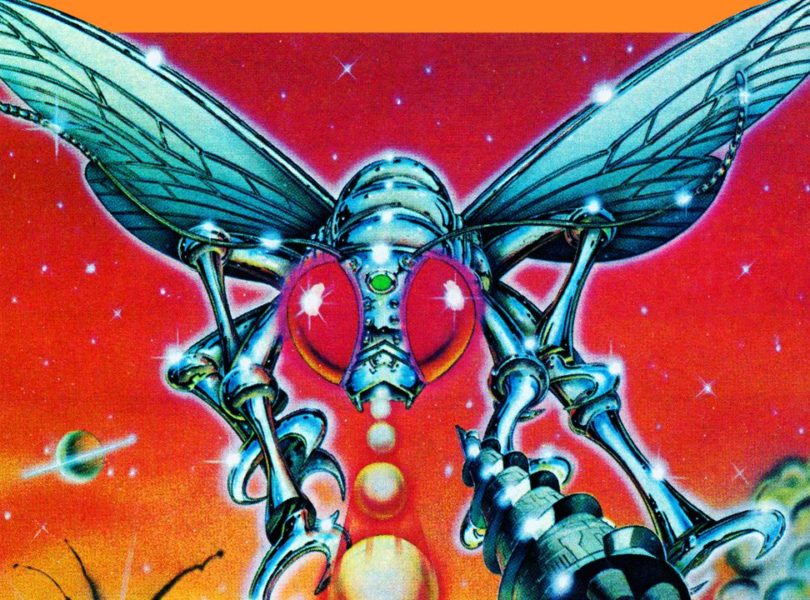Release Date: May 1982
Developer: Howard Scott Warshaw
Publisher: Atari
The Atari 2600 was the sales leader for the second generation of home video games. It was also quite tricky to develop games for. The system’s notoriously low capabilities and the game cartridges’ equally low capacity made things difficult for programmers. The stories about having to read manuals to learn to exploit buffers and registers in order to squeeze the last ounce of performance from the console were numerous.
The programmers at Atari, however, were some of the most creative and most technically proficient at the time. Although largely unheralded, they had skills that were recognized throughout the nascent industry. Although some of them ended up leaving Atari to form third-party companies Activision and Imagic, Atari was able to retain some great talent. Arguably, the greatest talent of them all was Howard Scott Warshaw.
To modern-day gaming aficionados, that name may inspire some derision. Warshaw, you see, is the man responsible for what many consider to be the worst video game of all time: September 1982’s disastrous E.T. the Extra-Terrestrial. However, just months before, he put the finishing touches on the game that would become Atari’s best-selling original title: May 1982’s Yars’ Revenge.
The premise of Yars’ Revenge was as simplistic as every game at the time: the player controls a Yar, an insect-like creature. The Yars’ goal is to destroy the Qotile , a being of some sort that is on the right side of the screen. To destroy the Qotile, the Yar must first whittle down a barrier protecting the Qotile, either by nibbling at it or shooting it. When the Qotile is exposed, the Yar must touch it or nibble at its barrier in order to arm a Zotile Cannon on the left. The Yar must then time the Zorlon Cannon’s shot, firing it so that it hits the Qotile.
Periodically, the Qotile turns into a Swirl. The Yar cannot touch the Swirl at all or it will die. The Swirl will spin stationary for a few seconds then launch itself at the Yar; the Yar must dodge this attack. The Qotile also fires a moning missile that slowly tracks the Yar. The Yar can avoid being damaged by the missile by ducking into a neutral zone, an area of interference in the middle of the screen. There, the missile cannot harm the Yar, although the Swirl still can.
If you were able to follow all that, you did good. If not, don’t feel bad. If it makes you feel any better, Howard Scott Warshaw did a lot of drugs back then.
Yars’ Revenge may not seem like much of a game, but it was amazing back then. I would play it for hours as a kid, stopping only to switch to Missile Command, my favorite game on the 2600. The game’s controls were tight as a drum and the gameplay was superb for the time. The critics, for the most part, agreed, giving the game high marks. It was also a success in the sales charts, topping one million units sold, a very impressive number at the time.
The game’s visuals and sound were pretty standard fare for the time, but stylized to fit the space bugs motif of the game. There’s a constant buzzing like an insect flying around. The neutral zone, which is said my Warshaw to be a visual representation of source code, was pretty trippy for the time. And the explosion sights and sounds were typical Atari: loud explosions and tons of flashing colors. There was nothing groundbreaking here, but it was well put together.
So how could the same programmer make a game as loved as Yars’ Revenge and also a game as reviled as E.T The Extra-Terrestrial?
It’s all a matter of time. As in, having enough to make a game.
Yars’ Revenge was developed over the course of a year, with no external pressure to release it until it was ready. E.T. The Extra-Terrestrial, however, was ordered to be done in time for the holiday season. With the delays experienced in securing the license from Steven Spielberg, Atari only gave Warshaw five weeks to finish the game. As I mentioned before, the 2600 was a difficult machine to program for effectively. Five weeks was not enough time to tweak and polish that game to meet the high expectations lofted on it. Atari should be glad the games didn’t catch fire like a Galaxy Note 7!
Still, Yars’ Revenge was proof that Warshaw did have talent and, given enough time, could make a hell of a game.
Does it still hold up? Unfortunately, no. The game is very simplistic by today’s standards, and there’s not enough in Unfortunately, no. The game is very simplistic by today’s standards, and there’s not enough in Yars’ Revenge to hold anyone’s interest. Old-school gamers like me would appreciate a quick run around the block with this game, but no one else will.
If you want to give it a whirl, though, there are options. A Game Boy Color port was released in 1999 by Telegames. A 3-in-1 cartridge featuring the game, Pong, and Asteroids was released in 2005 for the Game Boy Advance. The original game was part of Microsoft Xbox’s Game Room in 2010, and a reimagined version was released for Xbox Live Arcade and Windows in 2011. Finally, Steam users can play the game as part of Atari Vault for Windows.
Good: Tight controls; decent graphics and sound
Bad: Oddball premise; not too much replayability; doesn’t hold up nowadays
Final score: 6.5/10


